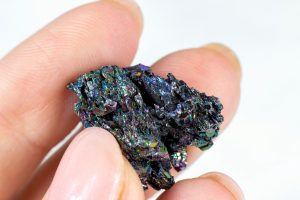EU PVSEC 2023 Wraps Up – Innovations are a Decisive Factor in the Global PV Race

• Photovoltaics Paves the Way to Combat Climate Change
• Awarding of the Becquerel Prize
• Session Recordings Available Worldwide
• EU PVSEC 2024 in Vienna, Austria
• ANNEX – Technical Highlights of the Conference
The European Photovoltaic Solar Energy Conference and Exhibition (EU PVSEC) 2023 concluded on 22 September 2023, marking another successful year of bringing together over 1850 leading experts, researchers and industry players to present and discuss the latest developments in photovoltaic research and technology. Over the course of five days, renowned researchers and industry pioneers shared their insights in over 1050 insightful presentations. The exhibition hall was bustling with activity as companies and organisations presented their latest products and services. As we reflect on this dynamic event, we are reminded of Dr Gunter Erfurt’s insightful opening speech, where he stated, “An ecosystem that has everything, from R&D to the industry, is most efficient.” This statement captures the essence of EU PVSEC, bridging the worlds of PV R&D and industry, and highlights the efficiency that results from such a strong collaboration.
Photovoltaics Paves the Way to Combat Climate Change
The key message of this week is the pivotal role of photovoltaics in mitigating climate change, urgently called for by the IPCC this year . Indeed, Diana Ürge-Vorsatz, Vice-Chair of the Intergovernmental Panel on Climate Change (IPCC) underlined that while climate change is an undeniable reality, the PV community is already providing effective solutions. Alarmingly, the IMF reported that fossil fuel subsidies surged to a record $7 Trillion in 2022 . Scaling back these subsidies would reduce air pollution, generate revenue, and make a major contribution to slowing climate change. This is particularly significant given that solar PV has been consistently cheaper than new coal- or gas-fired power plants in most countries. According to the International Energy Agency (IEA) , solar projects now offer some of the most affordable electricity rates ever recorded. The global community echoes the IMF, IEA and IPCC and calls for the elimination of wasteful subsidies for fossil fuels and increased investments in a clean energy future.
Building on a rapidly expanding production and deployment rate and 1.5 TW of global installed capacity expected by the end of 2023, the PV community discussed the pathways and challenges towards becoming a major, sustainable, and circular clean energy source in the coming decades.
Awarding of the Becquerel Prize
During the opening ceremony of the EU PVSEC 2023, Dr. Gunter Erfurt was awarded the prestigious Alexander Edmond Becquerel Prize. This recognises his remarkable achievements in revitalising the advanced manufacturing of silicon solar cells and modules in Europe through his leadership at Meyer Burger.
Session Recordings Available Worldwide
EU PVSEC offers participants the extended opportunity to access the wealth of knowledge presented at the event. The recordings of the scientific sessions and Parallel Events and the Industry Summit will be accessible for three months, allowing attendees to continue to work with the valuable content and innovative insights even after the event.
EU PVSEC 2024 in Vienna, Austria
The EU PVSEC is set to return in 2024, bringing together solar energy experts, researchers, and industry leaders in the picturesque city of Vienna, Austria from 23 – 27 September for another exceptional event. Stay tuned to find out more about the exciting programme, registration, and opportunities to be at the forefront of solar energy innovation.
Background EU PVSEC
The EU PVSEC is the world’s leading forum for PV Research and Development and the biggest Conference on PV Solar Energy. With a history of over 40 years, EU PVSEC is the longest running, renowned PV conference in the world.
The scientific programme is coordinated by the European Commission Joint Research Centre.
ANNEX
Technical Highlights
Silicon remains the backbone of photovoltaic industry. New cell structures with passivating contacts such as TOPCon or heterojunctions have allowed the continued efficiency improvement of industrial cells by 0.5%/year. Best silicon cells have achieved efficiencies of 26.8% getting very close to the theoretical limit. That makes it necessary to work on a new generation of cells such as perovskite silicon tandem cells which have already proven excellent performance in the lab (>33%). A novel PV technology, perovskite, has made its way to the market, with a 100 kWp system having been implemented using 90W modules which passed both the IEC61215 and IEC61730 tests.
Despite technological improvement a major challenge is the sustainability of PV production, i.e. reducing use of energy and critical materials. A new generation of encapsulant materials (POE, EPE), polymeric back and front sheets is one of the hot topics in PV module manufacturing. Ensuring PV modules are fully sustainable, considering elements such as minimizing use of critical raw materials (e.g., silver), lowering carbon footprint, extending the durability and lifetime of the products and securing a successful recycling are also critical considering the expected rapid expansion to the multi-TW era.
There are many recent developments in the integration of PV in different areas, including BIPV, VIPV, floating PV, Agri-PV, and PV on roads leading to an ever more diversified application landscape. Novel module materials and technologies are presented, and dedicated reliability and outdoor testing approach to ensure their deployment. Fully using the existing built infrastructure is estimated to provide a significant percentage of the future electrical generation needs. It is very encouraging to see how operational data is shared and data driven operation and maintenance strategies are becoming reality. Although only slightly touched upon this year, AI is also entering the PV sector and we expect disruptive innovation soon.
Various scenarios for renewables, policy implications, and global challenges, shed light on the future trajectory of PV in the energy transition. Societal challenges and public acceptance are also critical, such as the role of citizen engagement and energy communities in driving the adoption of PV.






